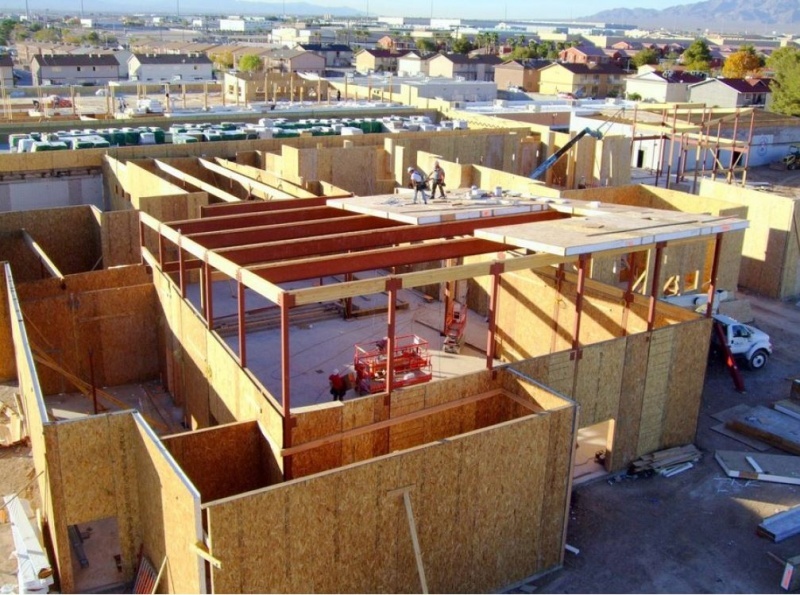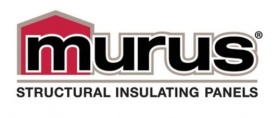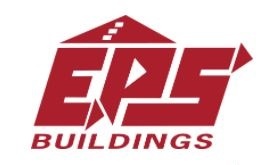
As we observe Earth Day, it’s important to unravel a hidden truth lurking within the very fabric of our homes: embodied carbon emissions. While our focus often centers on the energy consumption within our houses, the materials used in construction also leave a lasting carbon footprint on our planet. Below we explore the concept of embodied carbon and its profound implications for the environment, advocating for a shift towards sustainable building solutions like Structural Insulated Panels (SIPs).
Understanding Embodied Carbon: What Is It and Why Does It Matter?
Embodied carbon signifies the carbon dioxide (CO2) emissions intricately entwined within building materials and construction processes. From project initiation to completion, each phase of a building’s lifecycle adds to its embodied carbon footprint. This encompasses not just material manufacturing but also extraction, transportation to the job site, and the construction methods employed. In essence, embodied carbon represents the cumulative CO2 emissions embedded within every aspect of a building’s existence, standing as a potent but often overlooked factor in sustainability.
Despite its significance, embodied carbon emissions are frequently sidelined, yet they constitute a substantial portion of a home’s overall carbon footprint, particularly in the initial years post-construction. Surprisingly, it is stated that within the next 5-15 years, embodied carbon could outweigh operational emissions in newly constructed homes, highlighting the urgency for proactive measures.
A Sustainable Solution for a Greener Future

A comprehensive study by McKinsey & Company sheds light on the profound impact of buildings on carbon emissions. While energy efficiency measures are crucial, the report highlights the overlooked significance of embodied carbon, particularly in insulation materials. Contrary to popular belief, it's not just about what happens during a building's operational phase but also about the materials chosen and their lifecycle implications. Learn more and download McKinsey & Company’s report: Building Value By Decarbonizing the Built Environment.
We want to raise the real question: why aren’t more builders, architects and homeowners turning towards sustainable building materials like SIPs? SIPs offer a climate-friendly, sustainable and practical solution to mitigate embodied carbon emissions while enhancing energy efficiency throughout a building’s lifespan. Compared to traditional insulation solutions, SIPs present a significantly lower installed embodied carbon footprint, making them a pivotal choice for environmentally conscious builders. Further, the benefits extend beyond mere carbon reduction. SIPs excel in insulating properties, offering superior thermal performance and reducing air leakage rates, which can account for up to 40% of a building’s energy usage for heating and cooling.
These claims are backed by concrete data in our first industry-wide SIP Environmental Product Declaration (EPD), aggregating data from our manufacturing members.
“SIPs are highly energy-efficient and therefore contribute positively to the environment by reducing CO2 levels. They also use significantly less energy during the manufacturing process compared to traditional construction methods and have lower embodied energy than traditional construction materials, such as steel, concrete and masonry.” - SIPA EPD
Through the lens of building science, SIPs emerge as champions of sustainability, not only lowering embodied carbon emissions but also yielding substantial energy savings during the operational phase. With SIPs emerging as a frontrunner in sustainable construction, it’s clear that the path to a greener future lies in embracing innovative building solutions.
Tools for Change: Navigating the Embodied Carbon Landscape

To tackle the challenge of embodied carbon, builders and homeowners alike need reliable tools for assessment and decision-making. BEAM, the Building Embodied-Energy Accounting for Materials Tool, spearheaded by Chris Magwood from Builders for Climate Action & the Rocky Mountain Institute, provides a groundbreaking solution. By leveraging Environmental Product Declarations (EPDs), BEAM quantifies the energy and carbon footprint of construction materials, empowering stakeholders to make informed choices. Explore Magwood's presentation and how to harness the BEAM tool with your designs.
Project Showcase: A SIP Testimony
Consider the case of an award-winning home builder in Washington State, who leverages these tools and carbon calculations to guide their quest for zero-energy operational homes. By prioritizing materials with lower embodied carbon, such as SIPs, they exemplify the synergy between environmental consciousness and exceptional craftsmanship. View the entire presentation here: The Embodied Carbon Story of a Green Builder by Talia Dreicer, TC Legend Homes & Powerhouse Designs.
Embracing Sustainable Solutions
As stewards of our planet, we must confront the hidden climate impact of residential construction. Embodied carbon emissions represent a silent yet formidable challenge, but with the right tools and mindset, we can pave the way for a more sustainable future. Let Earth Day serve as a reminder of our collective responsibility to build smarter, greener, and more resilient homes for generations to come. Together, let’s turn the tide on embodied carbon and embrace responsible building solutions like SIPs on our journey toward a carbon-neutral world.
Switch to SIPs
If you're embarking on your SIPs journey, we welcome you to explore our website. It's filled with valuable information and resources to guide you on how SIPs can elevate your project and serve as the sustainable building solution you've been seeking. We provide insightful resources tailored to all project stages including Designing with SIPS & Building with SIPs. Design specifications, code reports, project showcases, builder education and AIA Continuing Education can all be found at www.SIPs.org
















